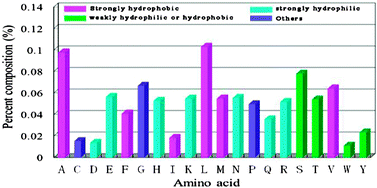Identifying protein quaternary structural attributes by incorporating physicochemical properties into the general form of Chou's PseAAC via discrete wavelet transform
Abstract
In vivo, some

* Corresponding authors
a
Department of Chemistry, Nanchang University, Nanchang 330031, P.R. China
E-mail:
jdqiu@ncu.edu.cn
Tel: +86 791 3969518
b Department of Materials and Chemical Engineering, Pingxiang College, Pingxiang 337055, P.R. China
In vivo, some

 Please wait while we load your content...
Something went wrong. Try again?
Please wait while we load your content...
Something went wrong. Try again?
X. Sun, S. Shi, J. Qiu, S. Suo, S. Huang and R. Liang, Mol. BioSyst., 2012, 8, 3178 DOI: 10.1039/C2MB25280E
To request permission to reproduce material from this article, please go to the Copyright Clearance Center request page.
If you are an author contributing to an RSC publication, you do not need to request permission provided correct acknowledgement is given.
If you are the author of this article, you do not need to request permission to reproduce figures and diagrams provided correct acknowledgement is given. If you want to reproduce the whole article in a third-party publication (excluding your thesis/dissertation for which permission is not required) please go to the Copyright Clearance Center request page.
Read more about how to correctly acknowledge RSC content.
 Fetching data from CrossRef.
Fetching data from CrossRef.
This may take some time to load.
Loading related content
